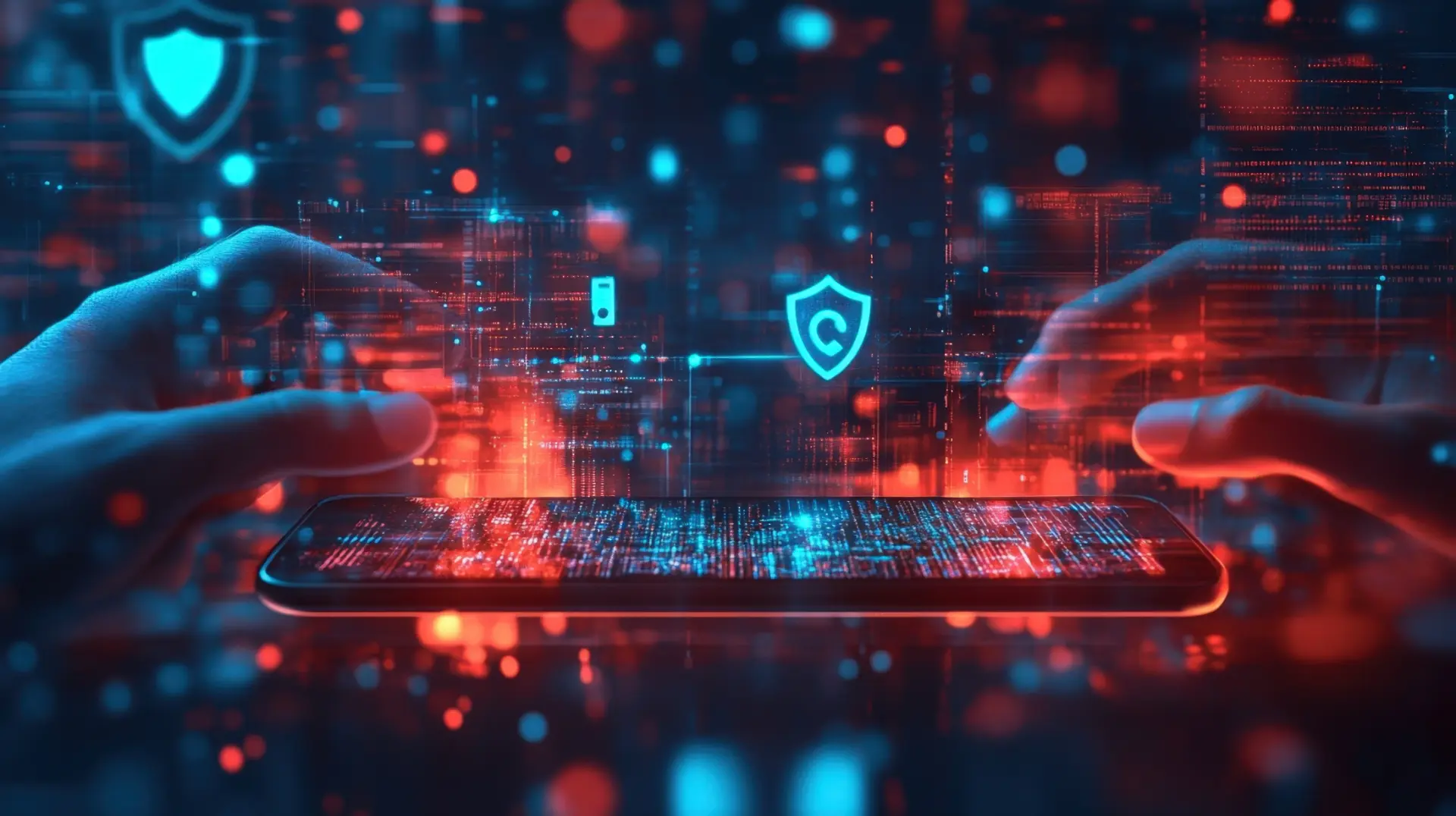Table of contents
- What is an infostealer?
- How an infostealer works
- How to detect an infostealer
- How to remove an infostealer
- How to defend against an infostealer
- Real-world examples
Among the many cyber threats haunting users and organizations today, infostealers stand out for their stealth and effectiveness.
These malware types are engineered to silently steal sensitive data such as login credentials, browser cookies, banking information, and crypto wallets—often without any signs of infection.
In this article, we’ll dive deep into what an infostealer is, how it works, how to detect and remove it, and most importantly, how to protect your systems against this growing threat. Whether you’re a cyber security expert or an informed user, this comprehensive guide is for you.
What is an infostealer?
An infostealer is a type of malware designed specifically to steal sensitive information from an infected device.
Unlike other malware such as ransomware, which aims to encrypt data to demand a ransom, infostealers work silently and aim to exfiltrate useful data for unauthorized access or resale on the dark web.
Infostealers can target both private users and corporate infrastructure, acting as a veritable data vacuum cleaner. The most common targets include:
Targets often include:
- Web browsers
For saved logins, history, session cookies - Email/FTP clients
To grab stored credentials - Crypto wallets
Especially those stored locally - Business apps
With access to sensitive files or cloud credentials
Some of the most infamous infostealers include RedLine, Racoon Stealer, Vidar, Azorult, FormBook, and LummaC2.
How an infostealer works
Understanding how infostealers operate helps in both defending and detecting them. Their lifecycle generally includes:
1. Infection and delivery
Infostealers are commonly delivered via:
- Phishing emails with malicious attachments
- Macro-enabled documents
- Drive-by downloads from compromised websites
- Trojans hidden in cracked software
A typical infection vector could be an .exe file disguised as a key generator, silently installing the malware in the background.
2. Execution and persistence
Once executed, the malware establishes persistence to survive reboots. For example:
reg add "HKCU\Software\Microsoft\Windows\CurrentVersion\Run" /v "Updater" /t REG_SZ /d "C:\Users\Admin\AppData\Roaming\infostl.exe" /fThis adds the malware to the Windows startup registry.
3. Data collection
Infostealers target specific files from known directories—usually browser databases stored as SQLite files. Here’s a simplified Python snippet that resembles what these malware do:
import sqlite3
import os
db_path = os.path.expanduser('~') + r"\AppData\Local\Google\Chrome\User Data\Default\Login Data"
conn = sqlite3.connect(db_path)
cursor = conn.cursor()
cursor.execute('SELECT origin_url, username_value, password_value FROM logins')
for row in cursor.fetchall():
print(row)4. Exfiltration
Collected data is then exfiltrated using:
- HTTP POST requests
- Telegram bot APIs
- Tor or proxy tunnels
- FTP uploads
How to detect an infostealer
Detecting an infostealer can be difficult because these threats are crafted to run stealthily in the background.
However, there are effective ways to uncover them using behavioral analysis, network monitoring, and security tools.
1. Check running processes
Infostealers often hide behind legitimate-looking names. Using Process Explorer allows you to:
- Verify digital signatures.
- Locate suspicious binaries.
- Detect memory injections or unusual startup paths.
Practical tip:
- Download Process Explorer: Microsoft Sysinternals
- Sort by “Company Name” and inspect unsigned entries.
- Right-click → Properties → check network activity and loaded DLLs.
2. Monitor network traffic
Infostealers must send data to external servers. Watching for unusual network connections can help identify them.
CMD command:
netstat -ano | findstr ESTABLISHEDMatch the PID to the running process in Task Manager.
PowerShell version:
Get-NetTCPConnection | Where-Object {$_.State -eq "Established"}Advanced tools:
- Wireshark
Deep packet inspection and filtering (e.g., POST requests to strange domains). - TCPView
Real-time socket monitoring.
Hint: Look for recurring connections to foreign or unknown IPs with no hostname resolution.
3. Antivirus and EDR
Traditional AVs might miss stealthy infostealers. EDR systems add deeper visibility into behavior such as:
- Accessing browser storage files (Login Data, Cookies.db)
- Keylogging behavior or screen capture
- Auto-start registry tampering
Suggested EDR tools:
- CrowdStrike Falcon
- Microsoft Defender for Endpoint
- SentinelOne
- Sophos Intercept X
EDRs allow event tracing, process tree reconstruction, and isolation of endpoints.
4. Analyze logs for anomalies
Infostealer behavior leaves forensic traces in logs:
- Windows Event Viewer → Security logs (Event ID 4688: new process).
- Firewall logs → Unexpected outbound connections.
- Proxy logs → POST/upload patterns or DGA domain lookups.
- DNS server logs → Randomized domains indicating C2 beaconing.
PowerShell example to pull process creation events:
Get-WinEvent -LogName Security | Where-Object {$_.Id -eq 4688} | Format-Table TimeCreated, Message -AutoSize
How to remove an infostealer
Once you’ve identified the presence of an infostealer, removing it must be done thoroughly and methodically to prevent reinfection. Below is a technical breakdown of each step, including commands and examples.
1. Boot into Safe Mode
Safe Mode with Networking disables non-essential startup items, which helps prevent the infostealer from launching automatically.
How to do it:
- Press Win + R, type msconfig, go to “Boot” > check “Safe Boot”.
- Or: Hold Shift while clicking “Restart” > Troubleshoot > Advanced Options > Startup Settings > Restart > F5.
Goal: stop the malware’s execution before cleanup.
2. Full antivirus scan
Use trusted tools:
- Bitdefender Rescue Disk
A bootable Linux environment with deep scanning. - Malwarebytes (offline scan)
- Microsoft Safety Scanner
Quick launch with command:
msert.exe /F:Y
(Forces full scan silently.)PowerShell scan (with Defender):
Start-MpScan -ScanType FullScanThis performs a deep scan using built-in Windows Defender.
3. System Restore
If the infection is recent, System Restore can return the machine to a clean state.
Run restore interface:
rstrui.exePick a restore point before the suspected infection.
Note: Many infostealers disable or delete restore points. Be prepared to continue manually.
4. Manual removal
Manual removal may be necessary if malware hides in non-standard directories or evades detection.
4.1 Suspicious files in user folders:
cd %AppData%
dir /a /b /s | findstr /i ".exe .dll .bat"To delete:
del "suspicious.exe" /f /q
Repeat under %LocalAppData%.4.2 Registry cleanup:
List startup entries:
Get-ItemProperty "HKCU:\Software\Microsoft\Windows\CurrentVersion\Run"Remove suspicious entries:
Remove-ItemProperty -Path "HKCU:\Software\Microsoft\Windows\CurrentVersion\Run" -Name "Updater"Tip: Malware often uses misleading names like “Chrome Helper” or “System Service Host”.
5. Formatting and reinstalling Windows
If malware has infected bootloaders, injected DLLs into core services, or opened persistent backdoors, reinstalling the OS is the only secure option.
Steps:
- Backup important data after scanning for malware.
- Use Windows Media Creation Tool to build a USB installer.
- Boot from USB and format all OS-related partitions.
- Reinstall and secure Windows from scratch.
How to defend against an infostealer
Prevention is always better than cure. Here’s how to guard against infostealers:
- Update everything
Keep your OS and applications up to date to patch known vulnerabilities. - Use two-factor authentication (2FA)
Even if credentials are stolen, 2FA can stop unauthorized access. - Avoid saving passwords in browsers
Instead, use a reputable password manager with strong encryption. - Segment your network
On a corporate level, isolate critical systems to reduce lateral movement. - Email security
Deploy anti-phishing filters and sandboxing on email attachments. - User training
Teach users how to recognize phishing attempts and avoid suspicious downloads.
Real-world examples
RedLine Stealer on Discord
In 2023, RedLine was distributed through Discord channels under the guise of game cheats. Users unknowingly installed it, exposing browser data, crypto wallets, and system info.
Vidar via cracked software
Vidar was embedded in pirated software downloads. Once launched, it exfiltrated documents, screenshots, crypto wallets, and cookies.
Conclusion
Infostealers are a dangerous and silent threat in the world of cyber security. Their ability to operate undetected and extract valuable data makes them particularly insidious.
Understanding what infostealers are, how they function, how to detect and remove them—and most importantly, how to prevent infection—is crucial for anyone operating in a digital environment.
Have you ever encountered an infostealer infection or suspicious activity on your system? Share your story in the comment form below.
Questions and answers
- What is an infostealer?
A malware designed to stealthily collect sensitive information from a compromised system. - What kind of data does it steal?
Passwords, cookies, browser history, banking credentials, documents, crypto wallet data. - How do infostealers spread?
Via phishing emails, malicious downloads, cracked software, or drive-by attacks. - How can I tell if I’ve been infected?
Unusual logins, network anomalies, slowed performance, or notifications from breached accounts. - How can I remove an infostealer?
Use antivirus tools, Safe Mode, restore points—or reformat if necessary. - What happens if my cookies are stolen?
Attackers can impersonate you and hijack your web sessions. - Are free antivirus tools enough?
Paid tools usually offer more advanced features like behavior monitoring and EDR. - How do companies protect against infostealers?
With segmented networks, EDR solutions, user training, and proactive threat hunting. - Can browser choice help protect me?
Yes—browsers with better security and fewer plugins reduce the attack surface. - Are mobile devices vulnerable too?
Yes, mobile versions exist that target SMS, browser data, and app credentials.
